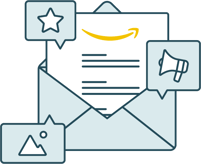For brands and manufacturers currently selling or thinking about selling their products on the Amazon platform, it can be a bit of an roller coaster. As the world’s largest e-retailer, Amazon can afford to make massive changes overnight without running it by its vendors, which means that those vendors must constantly be checking the news and updates to see if anything has changed. One critical thing that’s always changing is seller fees, which basically dictate how much it costs to do business on Amazon.
Earlier this year, Amazon announced it was raising fees for sellers in select categories, effectively making the apparel category the most expensive category in the marketplace. This fee change will impact third-party sellers across the board by increasing referral fees, which are kind of like a tax per item, ranging from $1 per item to up to 17% of the total product cost.
Vendor fees are not the only ones going up either. Fulfillment and storage prices are also on the rise, and while Amazon gives a valid attempt at organizing and presenting these fees in an organized way, there are still some lingering questions. Basically, if you’re shipping through a Fulfilled by Amazon (FBA) relationship and you’re dealing with Large Standard Size and Small Oversized items, you’re going to be looking at a fee increase of around 15% across the board.
The extent of these fee changes for your particular brand will depend on the type of selling plan you have with Amazon, whether or not you’re part of the FBA program, and if your selling in a certain market with higher overheads, such as retail.
So how can brands justify selling on Amazon while these costs are continuously on the rise? The best way would be to partner with a single third party seller to handle all of your Amazon products and logistics. Instead of trying to keep track of where your products are being stored, how much Amazon warehouse space you’re taking up, or how multiple sellers are handling referral fees, working with a single seller eliminates all of this confusion. In this case, your single seller partner will actually purchase your product from your brand wholesale, becoming the new ‘owner’ of the product. This will allow the single seller to take over all fulfillment and shipping logistics, handle all FBA agreements, and keep tabs on new seller rates as they change.
Trust us – the days of Amazon price increases are nowhere close to being over. The online marketplace is only growing, and as the demand for online products increases so too will the back-end infrastructure increase as well. As part of this, Amazon will continue to update it’s logistics arm, re-evaluate how sellers and vendors do business on the site and improve the relationships consumers have with the platform. For innovative brands thinking about selling or currently selling on the platform, it’s time to get ahead of the curve in terms of innovation and customer service – or you’ll be quickly overrun by the competition.
Lorem ipsum dolor sit amet, consectetur adipiscing elit


Sign up to receive our newsletter for growth strategies, important updates, inventory and policy changes, and best practices.
These Stories on Logistics & Fulfillment
For press inquiries, please contact Molly Horstmann, mhorstmann@supplykick.com